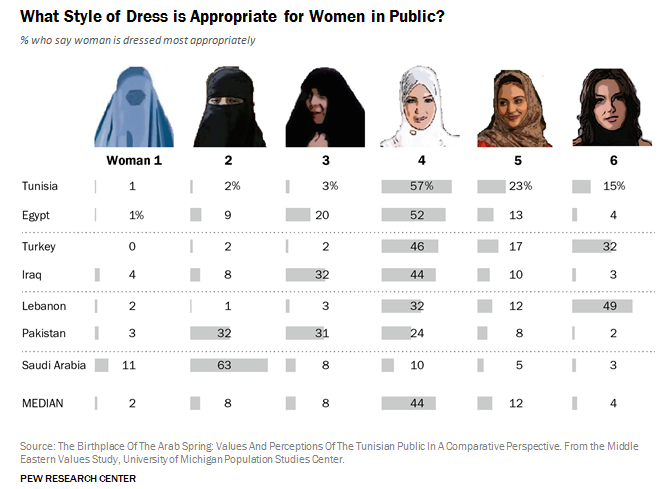Veiling and its legal status in the constitutional order has always been an important political issue in the Islamic world. While in pro-secular countries like Turkey, Islamic veiling was prevented by the state via harsh restrictions until very recently, in most of the Islamic countries, the use of headscarf and other types of veiling clothes has always been very common and free. The controversy has two dimensions; on the one hand, it is a matter of political and religious freedoms, but on the other hand, it represents a social order in which the status of women is not equal to men and veiling is not a matter of choice, but rather a forceful imposition due to societal pressures. Thus, it is very interesting to note that, while the secular state in Turkey was forcing its female citizens to remove their headscarves and open their heads in universities and public offices until very recently, in Islamic regimes such as the Islamic Republic of Iran and Saudi Arabia, women are still forced to cover their hair/head. Recently, Turkish academic and Professor of Sociology Şerif Mardin created a new sociological concept, “mahalle baskısı” (local compulsion)[1] in order to explain Turkey’s rapid Islamization in recent years, at least in terms of female dressing, which is caused by high social pressures and increasing Islamic authoritarianism atmosphere in this country. In this piece, I am going to analyze the results of a new scientific study conducted by University of Michigan’s Institute for Social Research on the current veiling trends in 7 Muslim-majority countries (Tunisia, Egypt, Iraq, Lebanon, Pakistan, Saudi Arabia and Turkey).[2]

Main findings of the research
Findings of the research point out that, except Turkey and Lebanon, in none of the Muslim-majority countries people approve females who do not cover their hair by more than 15 %. In Turkey, there is 32 % support for non-veiled women, whereas in Lebanon it is around 49 %. Other than these two countries, only in Tunisia (15 %) there is a meaningful support for women who do not cover their hair. However, this could be misleading; we should not forget that Lebanon has a large Christian population, Tunisia has been making steps towards secular democracy in recent years and Turkey, until very recently, was a strongly secular country. In all other countries, the support for non-veiled women is somewhere between 2 % and 4%, which shows that social life could be very difficult for secular Muslim women in these countries and they are always open to social pressures since they constitute the minority.
Moreover, in Muslim-dominated countries, there is not a consensus on the veiling style and there are many alternatives for veiling. For instance, veiling model which allows some parts of the hair (başörtüsü in Turkish) to be shown is popular in Tunisia (23 %) and Turkey (17 %), but in other countries it is rarely seen. The most popular veiling style among the Muslim-majority countries is the headscarf which covers all hair, “türban” in Turkish. This is approved by 57 % in Tunisia, 52 % in Egypt, 46 % in Turkey, 44 % in Iraq and 32 % in Lebanon. Traditional black chador (kara çarşaf), which allows all face to be shown is popular in Iraq (32 %) and Pakistan (31 %) only and it is almost non-existent in countries like Turkey, Tunisia and Lebanon. Niqab, a dress that allows females only eyes to be shown in public is a norm in Saudi Arabia (63 %) and also a major trend in Pakistan (32 %), but it is almost non-existent in other countries. Likewise, burqa, the dress that covers all face, exists only in Saudi Arabia (11 %).
How we should assess these results then? Results show that Islamic veiling is very common in the Muslim-majority countries. In more secular, democratic and heterogeneous countries such as Turkey, Lebanon and Tunisia, there is more freedom for non-veiled women or more libertarian ways of veiling. It is also interesting to note that the fears of hardliner secularists could be just; since in Turkey, women have quickly changed their dressing style following the take-over of an Islamist government in 2002 in a few years. It is a fact that enlightened despots like Mustafa Kemal Atatürk, a great modernizer who was able to change and modernize the dressing style of his fellow citizens, were the products of 20th century and in contemporary world order, it would be a wiser policy to leave the decision to the society in issues related to female dressing. But this means, neither secular, nor Islamic pressures should be allowed and the decision should be left to female individuals only. Of course, with all its problems, Turkey still seems to be the only successful model for the rest of the Islamic world in terms of modernization and secularization.
Cover Photo: Former Turkish Prime Minister Tansu Çiller and former Pakistan Prime Minister Benazir Bhutto during their visit to Bosnia Herzegovina in February 1994.
Dr. Ozan ÖRMECİ
[1] https://www.youtube.com/watch?v=yClDFe5sfS8.
[2] For details see; http://www.pewresearch.org/fact-tank/2014/01/08/what-is-appropriate-attire-for-women-in-muslim-countries/ and http://mevs.org/files/tmp/Tunisia_FinalReport.pdf.
























































